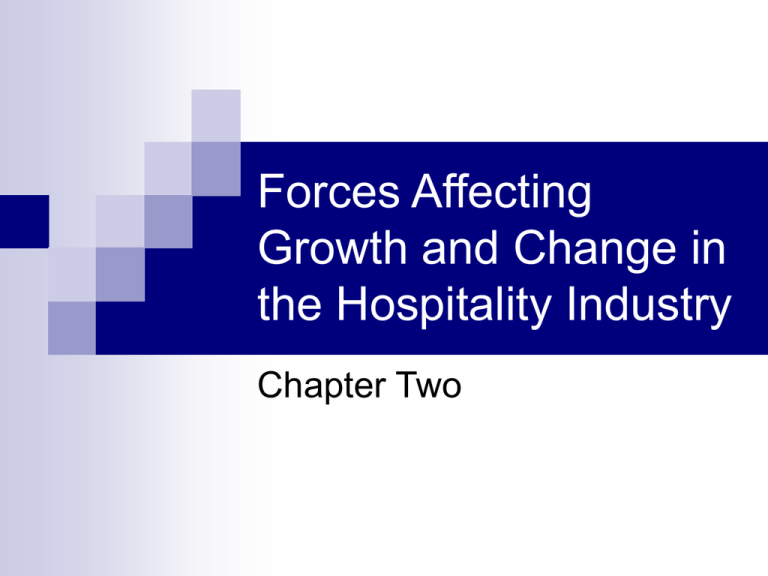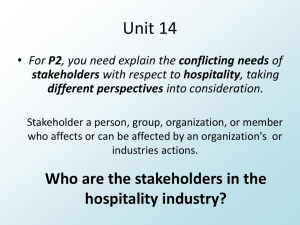Forces Affecting Growth and Change in the
advertisement

Forces Affecting Growth and Change in the Hospitality Industry Chapter Two The Purpose of this Chapter The hospitality industry, as it exists today and will probably be tomorrow, is the result of the interaction of basic market forces. We will look at the most basic of these forces below. The first is demand for hospitality services from consumers. The second is the supply of the products and services created by hospitality service companies. Demand in the Hospitality Industry Demand is the most basic force driving the hospitality industry’s development. This demand translates into customers, so to understand demand we must first understand our... Customers! Demand translates into customers We need to look at our customers from three different perspectives: We need to understand what the population’s changing age patterns are We will explore how they affect the demand for hospitality products We will look at other patterns of change, such as: the increase in working women the transformation of family structure the changes in income and spending patterns. Demographics vs. Psychographics Demographics The study of objectively measurable factors in the population, such as age, income, gender, sexual preference, marital status, etc. Psychographics Different patterns of activities, interests, and opinions – the forming of “groups” Structural Changes That Will Shape Demand for Hospitality Services in the Twenty-First Century Increasingly diverse population More women in the workforce Changing family composition Changing income distribution The Changing Age Composition of our Population Baby Boomers Born 1946–1964 Constituted nearly onethird of the population in 2000 Generation Xers Born 1965–1975 Have reputation as worldly wise, independent, pragmatic, computer savvy, ad-intelligent consumers Echo Boomers Born 1976–1994 Children of baby boomers Will nearly overtake baby boomers in number by 2010 Changing Family Composition Households with children under 18 Largest segment today—37 million Households without children under 18 Will increase 29% to 37 million by 2010 Spend more than any other household Changing Family Composition Single-person households Growing because more people are delaying marriage until completing their education Good potential customers for the hospitality industry Changing Family Composition Single parents Have relatively lower incomes Eat out less often than the average American Less likely to be hotel customers or to travel Good Locations for Hospitality Establishments High-traffic areas Locations near major destinations Locations associated with scenic beauty Hospitality Occupations Expected to Grow More Quickly Than the Total Workforce Growth of U.S. workforce: 14% Chefs and cooks: 14% Servers: 15% Foodservice and lodging managers: 16% Flight attendants: 30% Travel agents: 18%





